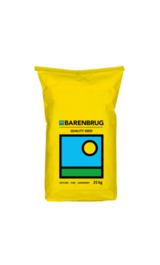• An annual clover (capacity for self regeneration varies)
• Intolerant of acid and sandy soils
• A bloat risk
• Low oestrogen
• Slow to cure as hay. Roller conditioning may be advantageous
• Persian clover’s very small seeds require a fine, weed free seed bed and should be sown no deeper than 10mm
• Very susceptible to attack by red-legged earth mite and lucerne flea
Lightning
- Soft seeded
- Mid season maturity – about 145 days to flowering
- Vigorous, erect to semi-erect annual clover
- Establishes quickly from a later sowing
- Tolerates waterlogging and mild soil salinity
- Forage / fodder cropping / annual mixes
- Can be sown with oats or tetraploid ryegrass



